Abandoned cart emails 101: Timing, content, and conversion tips
Published on September 10, 2025/Last edited on September 11, 2025/15 min read
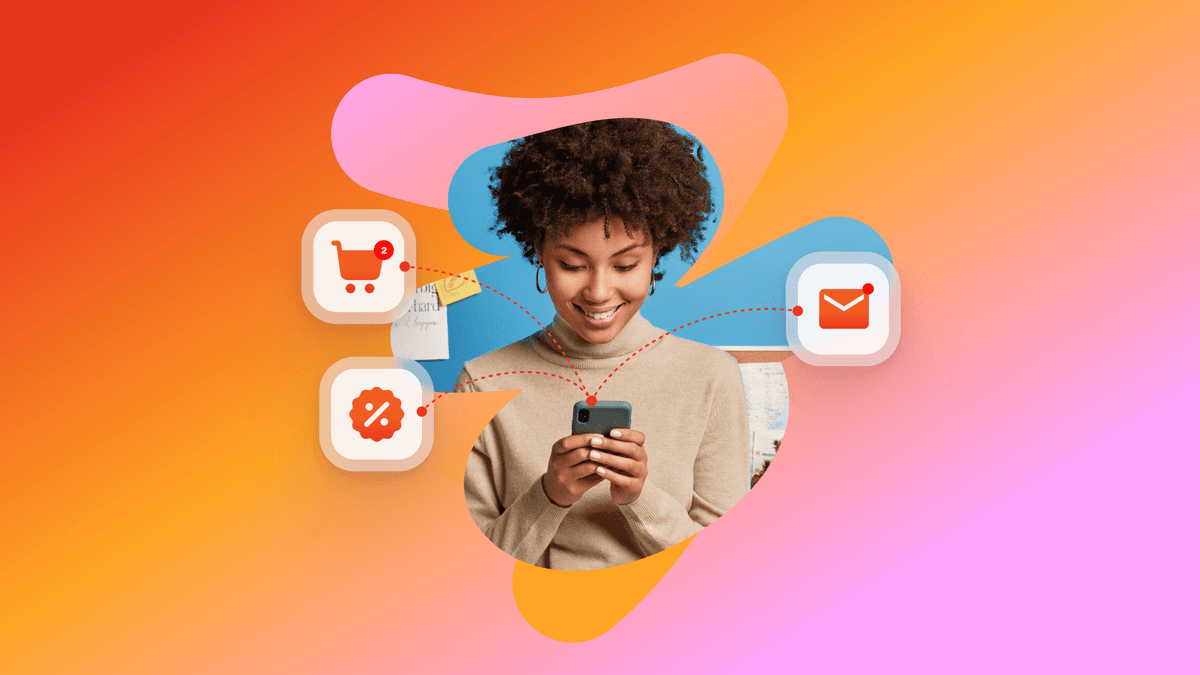
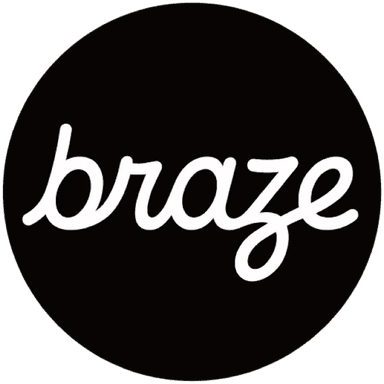
Team Braze
Every time someone adds an item to their cart but doesn’t check out, there’s an opportunity waiting. It might look like a lost sale, but with the right message at the right moment, it can turn into a conversion.
The role of an abandoned cart email is to remind customers what they left behind and encourage them to complete their purchase. These messages help recover revenue, but also reduce friction, revive interest, and reconnect with high-intent shoppers.
And there’s a lot of potential on the table. The scale of that opportunity is massive. Some research suggests that just over 70% of shopping carts are abandoned worldwide, with others reporting around $4 trillion in lost revenue globally each year. These exits can happen for many reasons—from surprise shipping fees to distractions—but well-timed messaging can make a major difference.
This article breaks down what makes an abandoned cart email effective, why timing and personalization matter, and how to structure a recovery series that actually delivers. You’ll also see how brands can go beyond email—combining push, SMS, and in-app messaging to build journeys that meet people where they are.
Contents
- What is an abandoned cart email?
- How abandoned emails help recover lost revenue for eCommerce brands
- How to craft more effective abandoned cart email strategies
- 20 abandoned cart email best practices
- Why brands shouldn't rely on email only for abandoned carts
- Real-world abandoned cart campaigns
- Choosing a customer engagement platform
- Final thoughts on abandoned cart emails
- FAQs about abandoned cart emails
What is an abandoned cart email?
An abandoned cart email is a follow-up message sent when someone adds items to their online shopping cart but doesn’t complete the purchase.
These messages are typically triggered automatically based on user behavior. They often include product details, images, and a clear path back to checkout. Some brands also layer in incentives—like free shipping or limited-time discounts—to encourage action.
Abandoned cart emails are one of the most widely used (and highest-performing) types of behavioral messaging in eCommerce.

How an abandoned cart series of emails can help recover lost revenue for eCommerce brands
Cart abandonment is a major source of revenue loss. Shoppers show clear intent—browsing, selecting items, and getting to the final step—before dropping off.
Abandoned cart emails give brands a second chance to convert those high-intent users. They create a bridge between interest and action by removing friction, restoring context, or simply reminding someone what they were about to buy.
When singular messages are built into an abandoned cart series of emails, they can significantly boost revenue per recipient and recover a meaningful percentage of lost sales. If extended across multiple channels, they become even more powerful.
How to craft more effective abandoned cart email strategies
Not every abandoned cart recovery message leads to a click. And not every click leads to a conversion. But with the right strategy, brands can significantly improve their chances of turning hesitation into purchase.
Before building your email content or flow, it helps to understand why customers abandon their carts and what elements actually drive re-engagement.
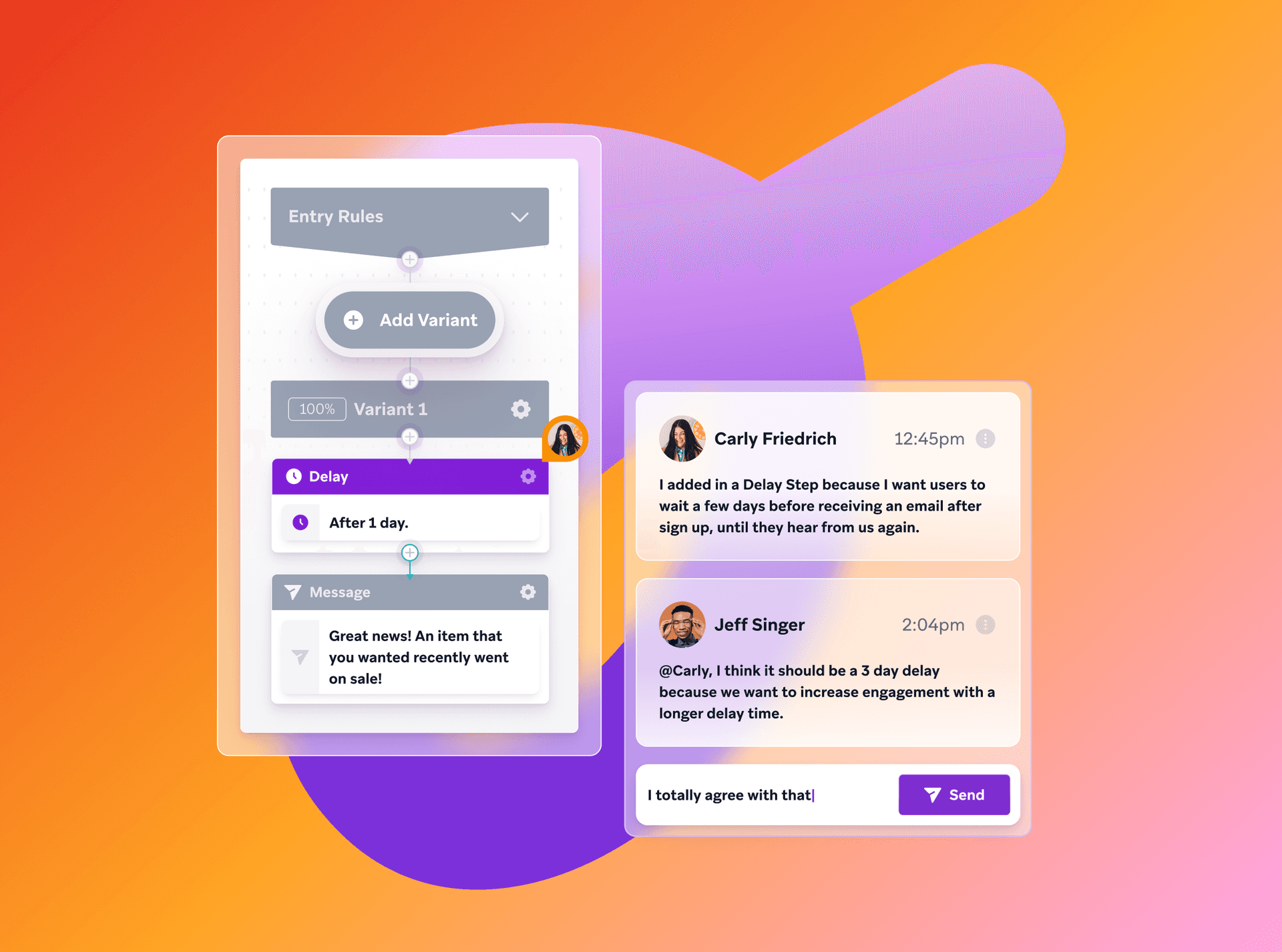
Cart abandonment checklist
Most abandoned carts aren’t a rejection—they’re a pause. Customers get distracted, lose trust at a key moment, or run into unexpected costs that make them hesitate.
Use this cart abandonment checklist to identify common friction points and shape your recovery messaging accordingly:
- Unexpected shipping fees, taxes, or service charges
- Forced account creation before checkout
- Long or complicated checkout forms
- Limited payment options or security concerns
- Unclear return policies or delivery timelines
- Technical issues (e.g., slow site, broken form fields)
- Simply browsing or comparing across sites
- Lack of urgency or motivation to complete the purchase
Each of these factors points to a different messaging opportunity—whether that’s a pricing clarification, a reminder email with product visuals, or a follow-up that re-emphasizes trust and ease.
What are the key components of an abandoned cart email series?
There’s no perfect formula, but high-performing shopping cart reminder emails tend to include the following elements:
A clear subject line
Use simple, relevant language to draw attention. Mention the product, the action, or the benefit (“Still deciding?” or “Your cart’s waiting”).
Recognizable product details
Include the item’s name, photo, price, and any chosen options (like size or color). This re-establishes context and saves the user from needing to backtrack.
A single, strong call to action
Tell the customer exactly what to do next—ideally with a button that says something like “Return to cart” or “Complete your order.”
Consistent branding and tone
Use your usual voice, visual style, and layout. The message should feel like it’s part of the shopping experience, not a separate system.
Supporting content
Add elements like customer reviews, free shipping banners, or reminders about return policies—especially for first-time buyers or high-value carts.
Mobile-friendly design
Make sure the message is readable and clickable on any device. Large images, short paragraphs, and vertical layouts can all help.
20 abandoned cart email best practices that actually work
You’ve got the trigger. You’ve got the cart data. But what turns an abandoned cart email from background noise into a conversion tool is how you design the experience. This list of 20 abandoned cart email best practices help build trust, increase relevance, and nudge the customer at just the right moment.
Identify why customers drop off
Before writing a single line of copy, make sure you understand the most common friction points. That might be cost, trust, timing, or complexity. Use this insight to shape tone and messaging.
Create a sequence, not just a one-off email
A well-timed series—usually two to three emails spaced over a few days—gives customers multiple opportunities to come back. Each message should have a different focus, from reminder to benefit to incentive.
Write in your brand’s voice
Recovery emails shouldn’t sound like automated system alerts. Keep the tone consistent with your website, product pages, and post-purchase flows.
Lead with clarity in the subject line
Tell people what the email is about in as few words as possible. Mention the product, the cart, or the next step. You don’t need to be clever—just clear.
Show what they left behind
Include item photos, names, and prices. Make it easy for the customer to recognise what they were interested in—no mental heavy lifting required.
Segment based on cart size or customer status
Someone abandoning a £15 item isn’t the same as someone abandoning a £500 one. New and returning users often respond better to different messaging strategies too.
Make the CTA obvious
Use one button. One action. One next step. It should be visually distinct and use action-oriented language like “Return to cart” or “Checkout now.”
Offer free shipping if it’s a known barrier
High delivery fees are a common reason for abandonment. If you can, offer free shipping in the final email as a way to encourage return.
Wait a little before sending the first email
Sending it immediately can feel robotic. Find the right delay for your audience.
Use social proof to build confidence
Include star ratings or short reviews to reassure buyers—especially if they’re new to your brand or hesitant about the product.
Prioritize mobile-first design
Most emails will be opened on a phone. Keep content stacked vertically, use large tap targets, and minimize distractions.
Use discounts selectively
Don’t train people to expect one. Save the offer for your final email or for specific segments like high-value carts or infrequent buyers.
Adjust CTA tone to suit your brand
You can experiment with softer or playful CTAs—like “Take another look” or “Treat yourself”—but they still need to be clear and action-focused.
Trigger emails based on behaviour, not batch schedules
Recovery emails should react to abandonment in real time, not wait for a daily send window.
Include product suggestions when it fits
If someone hasn’t returned for their original item, show alternatives. This can turn a lost sale into a different conversion.
Use urgency—but only when it’s genuine
Limited stock or time-limited offers work well when real. Don’t fake it. It erodes trust.
Suppress users who’ve already converted
Don’t keep emailing customers who’ve completed the purchase through another channel. Use logic to remove them from the flow automatically.
Keep branding consistent across channels
Your emails should look and feel like your website or app. From fonts to colors to tone, consistency builds trust and recognition.
Test subject lines, layout, and timing regularly
What works now might not work later. A/B and multivariate testing is essential for refining your approach over time. The best abandoned cart email timing and messaging will vary based on a variety of factors.
Expand the flow across multiple channels
Not everyone checks their email. Add push notifications, SMS, or in-app reminders to meet customers where they’re most likely to respond.
Why brands shouldn't rely on email only for abandoned carts
Email is a proven channel for abandoned cart recovery—but it’s not always the most effective on its own. Customers don’t live in their inboxes. They switch between apps, tabs, and devices. Relying solely on email means you risk missing the moment they’re ready to act.
Cross-channel orchestration gives brands more options. With the right signals, you can trigger a cart reminder as a push notification while someone’s still browsing on mobile, follow up with an SMS if they’ve opted in, or use in-app messaging to prompt checkout the next time they open your app. Each of these channels works best when it's triggered in the right moment for the right user.
Instead of repeating the same email sequence, you can switch tactics depending on where the user is in their journey, their preferences, and past behavior.
Brands using Braze often build dynamic abandoned cart flows that span multiple touchpoints—moving seamlessly between mobile and desktop, email and app, with logic that adapts based on behavior and conversion signals. Whether that’s suppressing a message once someone completes a purchase or delivering a second push notification only if the first was ignored, the goal is the same—help people pick up where they left off, without creating friction or fatigue.
Free abandoned cart flow examples by industry
Cart abandonment strategies differ depending on the industry. Customer expectations, industry norms and buying behavior shape the flow. Here are generalized examples of abandoned cart message flows across different sectors—each of which could include email, push, SMS, or in-app reminders, depending on the audience.
These flow ideas are designed to be flexible and can be adapted using tools like Braze to create cross-channel experiences.
Retail and eCommerce
Flow summary:
- Email 1: Reminder with product image, name, and CTA
- Push notification (if no conversion): Gentle nudge with incentive or limited-time offer
- Email 2 (24–48 hours later): Include social proof or UGC for the product
- Email 3 (72 hours later): Incentive (e.g., free shipping or 10% off)
Media and Entertainment
Flow summary:
- In-app message (next app open): Resume where you left off—e.g., paywall or subscription cart
- Email 1: Reinforce value—benefits of subscription or trial
- Push (24 hours later): Highlight exclusive content or upcoming release
- Email 2: Discount for first-time sign-up or bundle deal
Travel and Hospitality
Flow summary:
- Email 1: Cart summary—saved destination, flight, or accommodation
- Push (1 day later): Alert about limited availability or price changes
- Email 2: Highlight user reviews or flexible cancellation policy
- Email 3: Offer discount code for booking within 24 hours
On-Demand Services
Flow summary:
- Email 1: “You were almost there”—summary of service or delivery cart
- Push (within 2 hours): Tap to resume order with CTA
- SMS (day after): Offer time-limited incentive or free delivery
- Email 2: Remind of benefits or refer-a-friend rewards
Financial Services
Flow summary:
- Email 1: Resume application or saved quote (with clear CTA)
- Push (next login): Nudge to complete onboarding or open account
- Email 2: Reinforce trust—include security info or testimonials
- SMS (optional): One-time reminder for opted-in users
Health and Wellness
Flow summary:
- Email 1: Product detail recap—benefits, ingredients, etc.
- In-app message: Reminder tied to wellness goal or plan
- Email 2: Personalised recommendations or complementary products
- Push or SMS (final): Offer small discount or consultation
For more inspiration, explore our breakdown of abandoned cart email and push examples across verticals.
Real-world abandoned cart campaigns
Here’s how two very different brands used Braze to build smart recovery flows that converted intent into action.
BlaBlaCar brings journeys back on track
BlaBlaCar is a long-distance carpooling service connecting millions of drivers and passengers across Europe. With a digital-first model and high volume of daily bookings, the team needed a scalable way to bring users back when they dropped off mid-journey.
The challenge
Many users were selecting trips but not completing their bookings. These drop-offs represented missed revenue and poor user experience—especially when customers were likely just distracted or uncertain.
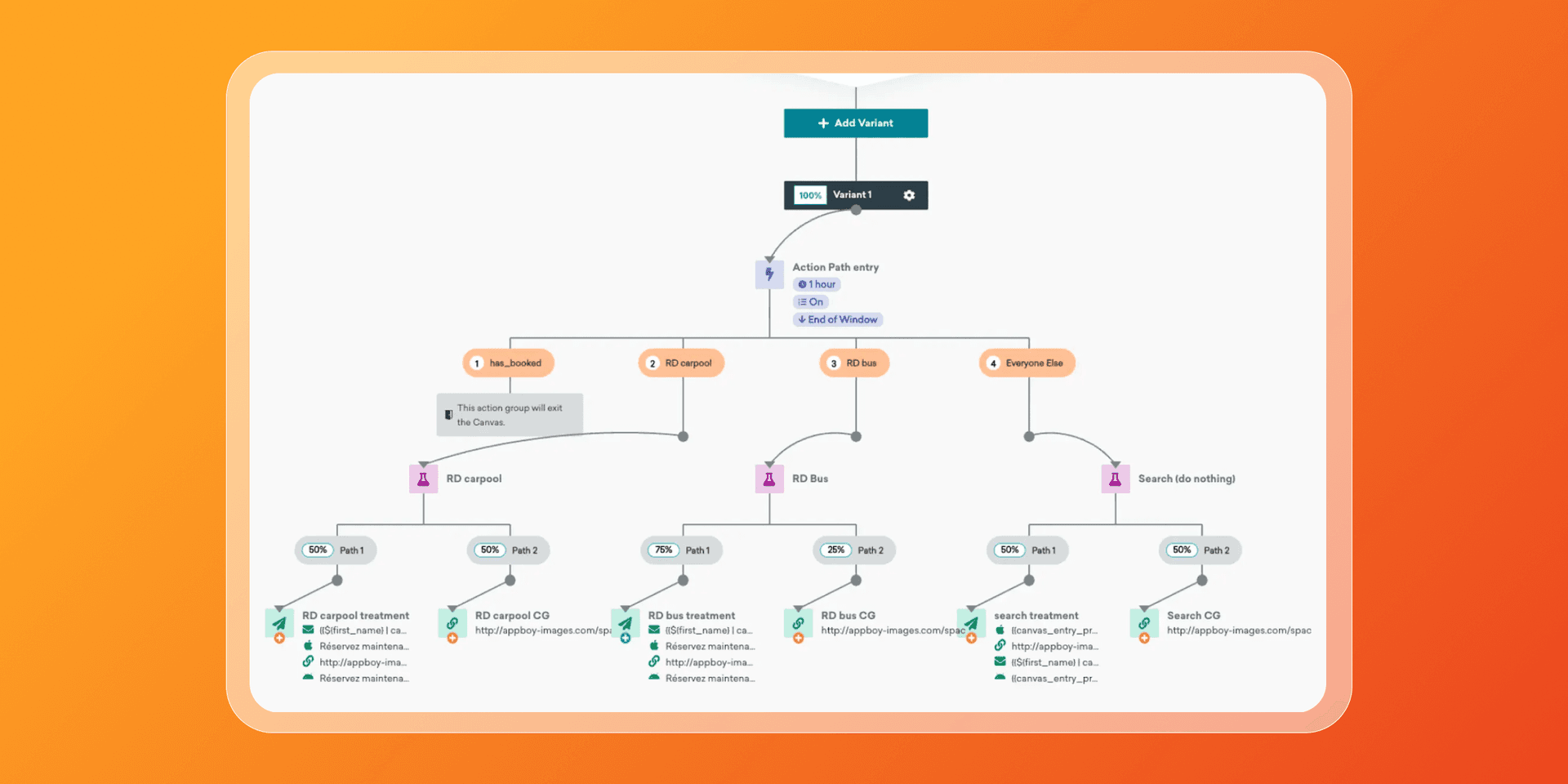
The strategy
Using Braze, BlaBlaCar built a behavior-triggered abandoned cart flow across email, push notifications, and some thoughtfully-deployed webhooks. Messages were automatically sent based on user device, engagement level, and timing. Each message included pre-filled booking details and a direct path back to checkout.

BlaBlaCar Case Study | Abandoned Cart Campaigns
The results
The campaign drove a 30% increase in bookings, and a 48% uplift in click rate.
Uber Carshare helps users finish the trip
Uber Carshare is an Australian peer-to-peer car-sharing platform that lets users book nearby vehicles on demand. With short booking windows and a mobile-focused customer base, cart abandonment meant losing out on ready-to-go renters.
The challenge
Many users browsed and added vehicles but dropped off before confirming the booking. Uber Carshare needed a solution that could follow up in real time and adapt to each user’s intent and context.
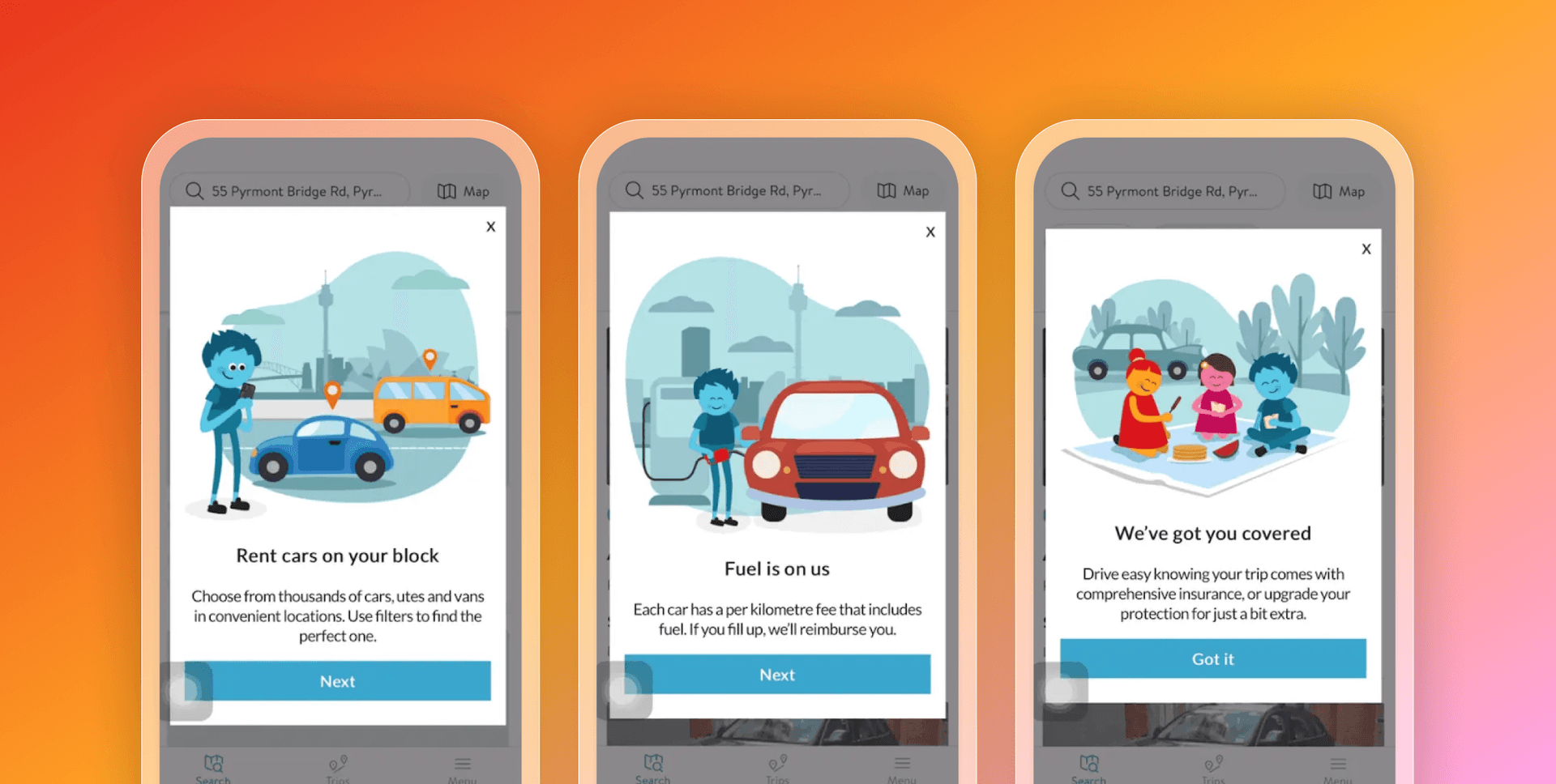
The strategy
The team used Braze Canvas to build a segmented abandoned cart flow triggered by in-app behavior. Messages were sent via push, email, or in-app channels depending on user preferences and included personalized trip details and car availability.
The results
The strategy led to a 20% increase in conversions, while also driving long-term engagement and increased app usage.
Choosing a customer engagement platform
Recovering abandoned carts is a personalized, real-time response to customer behavior, choosing the right message for each person, and delivering it on the channel they’re most likely to engage with. That kind of orchestration requires more than a basic email tool.
A strong customer engagement platform should give your team the flexibility to:
- Build cross-channel abandoned cart flows with email, push, SMS, and in-app messaging
- Use real-time behavioral triggers to follow up based on browsing, cart activity, or checkout drop-off
- Segment audiences dynamically based on cart size, product type, purchase history, or engagement level
- Test and optimize every message in the flow with A/B testing, delivery windows, and performance analytics
Personalize messaging at scale, pulling in live cart details, product images, pricing, and offers

Platforms like Braze are built to help brands take action at the moment of highest intent. Whether your team is managing global retail campaigns or app-based micro-moments, the right tools can make all the difference.
Final thoughts on abandoned cart emails
Cart abandonment isn’t going away—but neither is customer intent. With the right approach, brands can turn dropped baskets into re-engagement opportunities that drive serious revenue. It takes more than a single follow-up. Success depends on timing, personalization, channel mix, and a message that feels relevant—not robotic.
By understanding why users abandon carts, crafting thoughtful flows, and testing what resonates, brands can build recovery strategies that work across industries and channels. A flexible engagement platform brings that strategy to life—helping teams reach the right people, in the right place, at the right time.
FAQs about abandoned cart emails
Why are abandoned cart emails important for eCommerce?
Abandoned cart emails help eCommerce brands recover lost revenue by reminding shoppers to complete their purchase. These emails are triggered when a user leaves items in their cart without checking out, making them a valuable tool for re-engagement.
How many abandoned cart emails should you send?
Most brands send a series of 2–3 abandoned cart emails spaced over a few days. The first is typically sent within a few hours, followed by one or two reminders with added urgency or incentives.
What’s the best time to send an abandoned cart email?
The best time to send an abandoned cart email depends on the industry, audience, and even specific customers. Test timing to find what works best for your customers.
What’s the average conversion rate of abandoned cart emails?
Conversion rates vary, and performance depends on timing, content, incentives, and how well the email aligns with user preferences.
How do you set up an abandoned cart email flow?
To set up an abandoned cart email flow, use a customer engagement platform with real-time tracking and automation. Trigger emails based on cart behavior, personalize the content, and sequence the flow across multiple touchpoints.
Be Absolutely Engaging.™
Sign up for regular updates from Braze.
Related Content
View the Blog
How behavioral marketing turns data into personalized experiences

Team Braze

Experience optimization: Turning data insights into better journeys

Team Braze

December 2025 Bonfire Marketer of the Month: Jagex’s Emma Oliver
